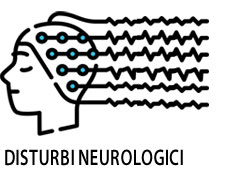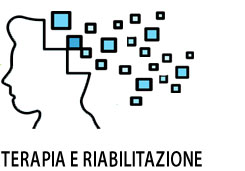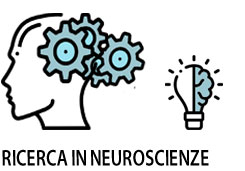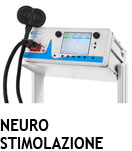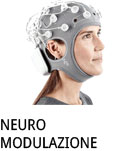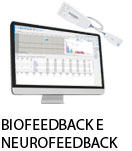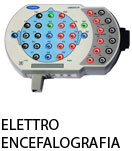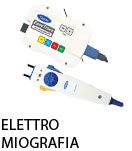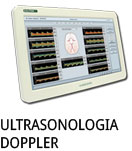- +39 011 5821948
- info@geasoluzioni.it
- Lun - Ven 8:00 - 17:30
P 95 Frequency-specific after-effects of transcranial alternating current stimulation (tACS) on motor learning
- Abstract:
- Background Motor learning is associated with changes in synchronized oscillatory activity at alpha (8–12 Hz) and beta (12–30 Hz) frequencies. Numerous studies demonstrated that tACS can entrain ongoing oscillatory activity (Antal and Herrmann, 2016) and modulate motor behavior (Pollok et al., 2015; Wach et al., 2013). However, the neurophysiological mechanisms underlying tACS (Antal and Paulus, 2013) and its modulatory effect on motor learning remain ambiguous. Thus, the purpose of the study was to investigate the effects of tACS on the learning of a bimanual visuomotor coordination task and the accompanied oscillatory activity. Methods Up to now, 19 right-handed healthy volunteers participated in the study and performed the task which is divided into three different levels of complexity (easy, moderate, difficult). Concurrent to motor practice, participants received either 10 Hz tACS, 20 Hz tACS or a sham stimulation over the parietal cortex (P3/P4) for 20 min via small gel electrodes (3,14 cm2 Ag/AgCl, amperage = 1 mA). Before and after tACS (immediately, 30 min, 1 day, 4 days, 7 days), movement speed and accuracy of the visuomotor coordination were assessed. Oscillatory activity was measured by electroencephalography (EEG, Starstim-Neuroelectrics, P3/P4/Fpz/Fz/Cz/Pz/Oz/VEOG). Results Analyzing motor performance, a three-way ANOVA (GROUPxTIMExCOMPLEXITY) revealed a significant main effect for TIME (F(5, 80) = 13.285; p < .001; η2 = 0.454), a significant main effect for COMPLEXITY (F(2, 32) = 195.087; p < 0.01; η2p = 0.924) and a significant TIMExCOMPLEXITY interaction (F10, 160) = 7.095; p < 0.01; η2p = 0.307). Bonferroni-corrected post hoc t-tests yielded a significant difference from pre to post-test immediately after tACS for all groups indicating an improvement in the task. The comparison of 10 Hz tACS and 20 Hz tACS revealed a significant difference in visuomotor coordination performance at the moderate level 30 min after stimulation (p < 0.05). At that time, the 20 Hz tACS group performed significantly faster and more accurate as compared to the 10 Hz tACS group with the sham group scoring between. However, analyzing the oscillatory activity, both real stimulations induced a significant increase in EEG alpha activity lasting up to 30 min after tACS in comparison to sham stimulation (p < 0.05). Conclusions The present study suggests that 10 Hz tACS and 20 Hz tACS increase EEG alpha activity which is in line with the theory of entrainment where synchronization can also occur at harmonics or subharmonics (Antal and Herrmann, 2016). Nevertheless, while both tACS frequencies entrain alpha activity they seem to have a different effect on motor behavior, 10 Hz tACS slows down while 20 Hz tACS speeds up the visuomotor execution.
- Patologie/Applicazioni:
- Anno:
- 2017
- Tipo di pubblicazione:
- Articolo
- Parola chiave:
- neuromodulazione; tacs; stimolazione elettrica transcranica
- Testata scientifica:
- Clinical Neurophysiology
- Nota:
- Il lavoro intende investigare gli effetti della stimolazione transcranica a corrente alternata (tACS) sulla coordinazione visuo-motoria nello svolgimento di task manuali. I soggetti partecipanti sono stati sottoposti a sessioni di tACS a 10Hz e 20Hz sulla corteccia parietale con lo Starstim e gli elettrodi PiStim. Prima e dopo la tACS è stata valutata la performance visuo-motoria. I risultati suggeriscono che la stimolazione a 10 Hz è meno incisiva di quella a 20 Hz nel velocizzare la coordinazione visuo-motoria.
- DOI:
- 10.1016/j.clinph.2017.06.171
Hits: 2070
La nostra storia
GEA soluzioni si affaccia nel 2013 al mercato della strumentazione medicale di alto livello tecnologico ma la sua storia parte da più lontano, clicca qui per approfondire.
GEA SOLUZIONI SRL
via Issiglio 95/10, Torino
Tel.: 011 5821948 / 011 4463853
Fax: 011 0433281
Email: info @ geasoluzioni.it
P. IVA IT11696920013
REA TO1233648

